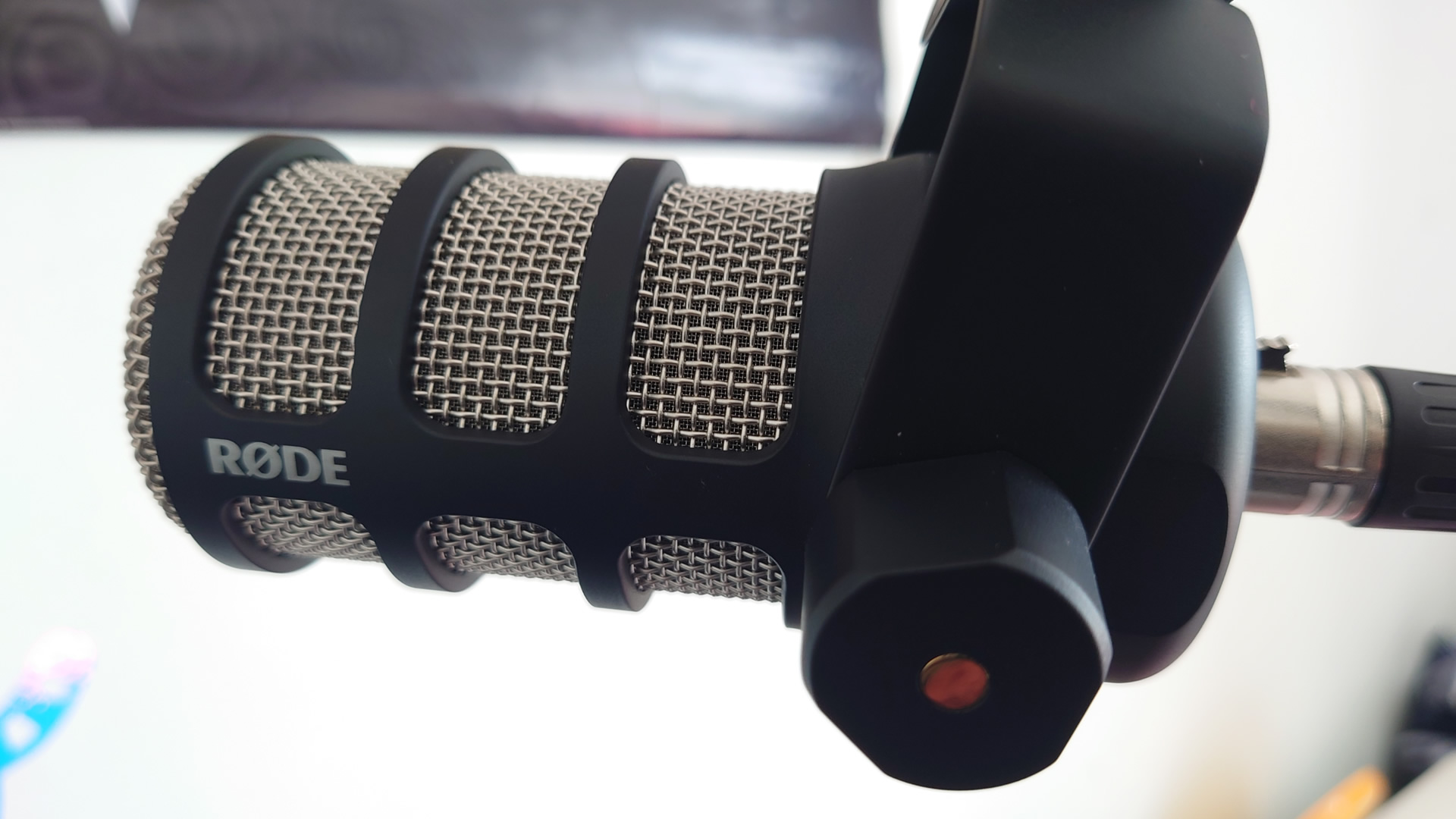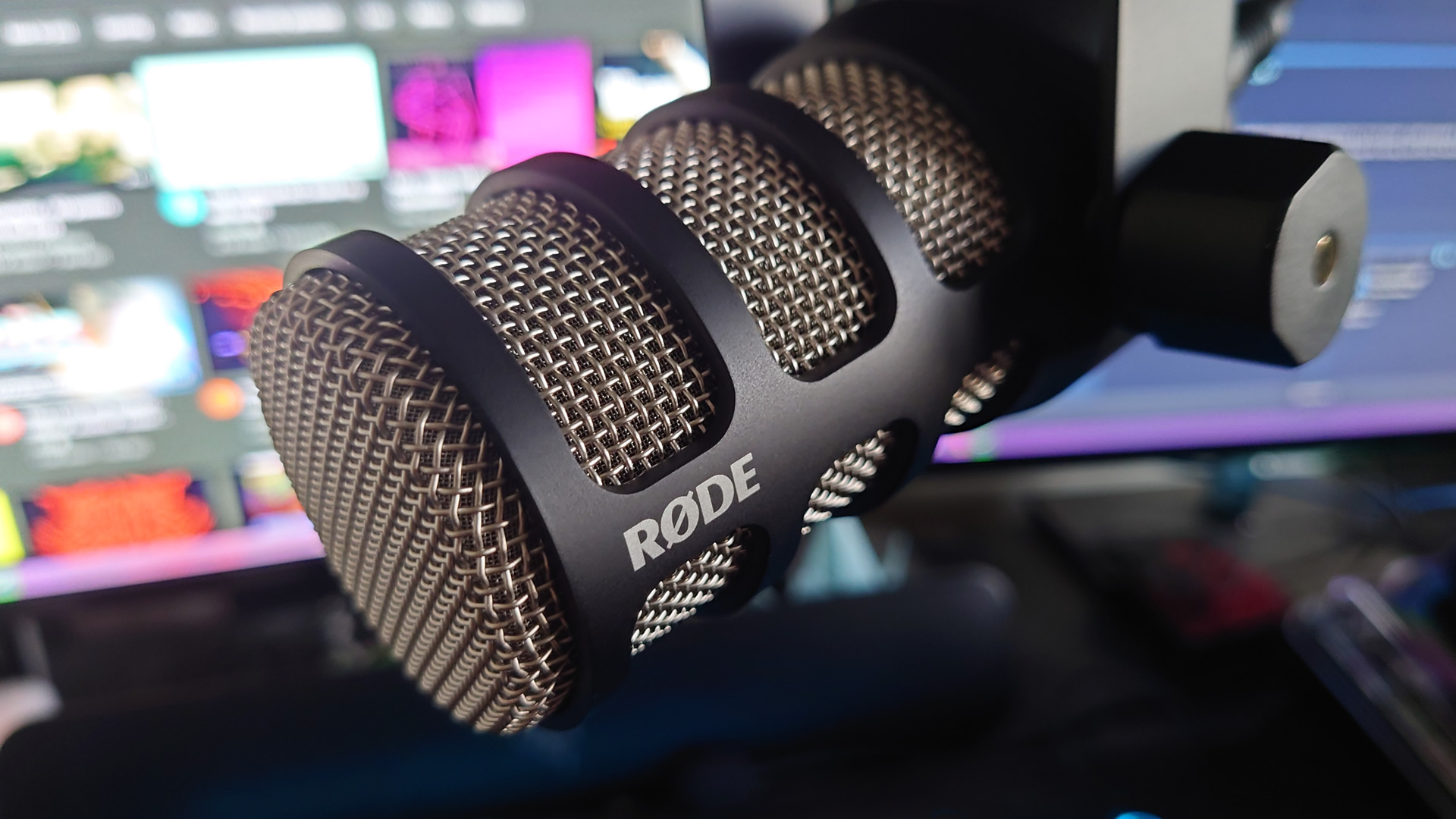GamesRadar+ Verdict
Rode continues to craft some of the best microphones for streaming, and the PodMic is certainly no exception to the rule. If you've got an audio interface, and are after a great-sounding model that won't break the bank, then there's little more you can ask for here.
Pros
- +
Amazing sound quality
- +
Aggressively priced
- +
Well constructed
- +
Balanced audio profile
Cons
- -
Stands/swing arms are sold separately
Why you can trust GamesRadar+
I'll cut right to the chase and tell you that the Rode Podmic is easily one of the best microphones for streaming that you can get your hands on in 2022. What's more, priced at just $99 / £99, it's one of the more aggressively priced models on the market, and ideal for any professional-grade streaming setup for less, especially if you're already integrated into the brand's current hardware ecosystem.
Design and Features
The Rode Podmic is distinctly retro in its physical appearance, with an overall classic aesthetic, which is evident in its all-metal cylindrical silver body wrapped in thick black guards. It's definitely a case of substance over style here, as while I personally think this is a great-looking piece of kit, it doesn't stand out much when compared to some other XLR microphones; clean and straightforward is certainly the name of the game.
What you will notice with the Rode Podmic over some other similarly priced XLR microphones is just how well built the brand's model is here. Simply put, I've never had my hands on a microphone that was this premium or durable feeling in all my years of recording music and streaming. There's a definite weight to this mic, too, adding to the high-quality feel and design of this unit.

Features
That weight isn't for nothing, though. The Rode Podmic features an internal pop filter as well as a shock mount, too. This means there's no explicit need to rush out and clip anything to the front of your mic, which is something I've personally struggled with before with XLR microphones when streaming and recording music. Perhaps the strongest addition here though is the integrated swing mount, meaning that this model is the perfect fit for any boom arms or stands you may have, especially those made by Rode itself.
As potentially expected from a $99 XLR microphone, no stand or boom arm is included out of the box. Our review unit came equipped with the brand's Rode PSA1+ mic boom arm, which is easily the best of its class that I've ever had my hands on. If you're in need of a sturdy and adaptable swing arm for your setup, then I can personally recommend the Rode PSA1+ as you get multiple different mounts, integrated cable management, and a level of movement and flexibility that just isn't seen in boom arms at its price point.

Performance
Simply put, the Rode PodMic is the best-sounding microphone I've ever used. Whether I've tasked the microphone with live streams, recording music, or tracking commentary tracks for VOD content, the accuracy and clarity that comes out of this punchy piece of kit cannot be overstated. This is due to its dynamic cardioid nature, which has a frequency range between 20Hz and 20kHz, meaning it can be easily fine-tuned through your audio interface of choice for optimum output settings.
Whether it was my tried-and-true Behringer U-PHORIA UMC202HD, my previous daily-driver audio interface for streaming and recording music, or the brand's recently released RodeCaster Pro II, nothing has come close to matching the sound quality on offer here. The responsiveness of the Rode PodMic is very precise, which meant that I was able to comfortably talk at a regular level without feeling the urge to speak louder to pick up properly, a problem that I've had with some USB microphones I've used in the past.
While the Rode PodMic is certainly best suited to podcasting and streaming, it's also proved formidable for recording vocals, too. In my testing, I've found that this model was easily able to track both clean and harsh singing with only slight adjustments needed in the gain settings to prevent clipping. If you're after a microphone that can do it all to a professional standard then this model certainly lives up to expectations.

Should you buy the Rode PodMic?
For $99, the Rode PodMic is one of the best value propositions you can get right now, especially when compared to the likes of the far more expensive Shure MV7 ($250 MSRP) while offering similar performance. Keep in mind, though, that you'll need to shell out a little extra for a decent stand or boom arm to get the most out of this model, but I think this microphone more than justifies that extra cost at a very competitive rate.
Whether you're intending on becoming a streamer for the likes of Twitch or YouTube Gaming, or you've got your sights set on podcasting to a professional standard, the Rode PodMic is an easy recommendation for the money. You just don't see such well-constructed microphones from premium brands with these features at under $100, meaning you can get great sound without breaking the bank here.
How we tested the Rode PodMic
For the past two weeks, I've used the Rode Podmic on a near-daily basis to talk with friends, have conference calls with my colleagues, track vocals for a new album I've been working on, and record commentary tracks for VOD content. Such programs I've used include Cyberlink PowerDirector 18, Nvidia Shadowplay, and OBS for the streaming side of things, Cockos Reaper and Audacity for music production, and Google Meet and Discord for daily conversations.
Gear up for streaming with the best ring lights, best green screens, and best webcams.

Aleksha McLoughlin served as the Hardware Editor for GamesRadar from June 2021 until August 2022. Her main area of expertise was the PC gaming platform, which comprised buying guides, features, reviews, and news coverage on components and prebuilt machines. She was also responsible for gaming chairs and storage. She now works on a freelance basis while studying to become a university lecturer specializing in English for foreign territories. Prior to joining GamesRadar, she wrote for the likes of Expert Reviews, The Rory Peck Trust, No Clean Singing, Vinyl Chapters, and Tech Spark while also working with the BBC.




